Connect With Us
Blog
Treating Corns and Calluses
 Corns and calluses are thickened areas of skin that form as result of an excess amount of friction and pressure. Diabetics are at a higher risk of developing complications as a result of corns and calluses, so it is imperative that they treat them immediately and with caution. However, those who do not have diabetes should treat their corns and calluses by soaking their feet, using over-the-counter pads and by wearing comfortable shoes. Moisturizing your feet can also be helpful in preventing corns and calluses because it helps keep your skin soft.
Corns and calluses are thickened areas of skin that form as result of an excess amount of friction and pressure. Diabetics are at a higher risk of developing complications as a result of corns and calluses, so it is imperative that they treat them immediately and with caution. However, those who do not have diabetes should treat their corns and calluses by soaking their feet, using over-the-counter pads and by wearing comfortable shoes. Moisturizing your feet can also be helpful in preventing corns and calluses because it helps keep your skin soft.
If you have any concerns regarding your feet and ankles, contact Dr. Yeon A. Shim of Roselle Podiatry Group. Our doctor will treat your foot and ankle needs.
Corns: What Are They? and How Do You Get Rid of Them?
Corns can be described as areas of the skin that have thickened to the point of becoming painful or irritating. They are often layers and layers of the skin that have become dry and rough, and are normally smaller than calluses.
Ways to Prevent Corns
There are many ways to get rid of painful corns such as wearing:
- Well-fitting socks
- Comfortable shoes that are not tight around your foot
- Shoes that offer support
Treating Corns
Treatment of corns involves removing the dead skin that has built up in the specific area of the foot. Consult with Our doctor to determine the best treatment option for your case of corns.
If you have any questions please feel free to contact our office located in Roselle, NJ . We offer the newest diagnostic and treatment technologies for all your foot and ankle needs.
Treating Corns and Calluses
 Corns and calluses are thickened areas of skin that form as result of an excess amount of friction and pressure. Diabetics are at a higher risk of developing complications as a result of corns and calluses, so it is imperative that they treat them immediately and with caution. However, those who do not have diabetes should treat their corns and calluses by soaking their feet, using over-the-counter pads and by wearing comfortable shoes. Moisturizing your feet can also be helpful in preventing corns and calluses because it helps keep your skin soft.
Corns and calluses are thickened areas of skin that form as result of an excess amount of friction and pressure. Diabetics are at a higher risk of developing complications as a result of corns and calluses, so it is imperative that they treat them immediately and with caution. However, those who do not have diabetes should treat their corns and calluses by soaking their feet, using over-the-counter pads and by wearing comfortable shoes. Moisturizing your feet can also be helpful in preventing corns and calluses because it helps keep your skin soft.
If you have any concerns regarding your feet and ankles, contact Dr. Yeon A. Shim of Roselle Podiatry Group. Our doctor will treat your foot and ankle needs.
Corns: What Are They? and How Do You Get Rid of Them?
Corns can be described as areas of the skin that have thickened to the point of becoming painful or irritating. They are often layers and layers of the skin that have become dry and rough, and are normally smaller than calluses.
Ways to Prevent Corns
There are many ways to get rid of painful corns such as wearing:
- Well-fitting socks
- Comfortable shoes that are not tight around your foot
- Shoes that offer support
Treating Corns
Treatment of corns involves removing the dead skin that has built up in the specific area of the foot. Consult with Our doctor to determine the best treatment option for your case of corns.
If you have any questions please feel free to contact our office located in Roselle, NJ. We offer the newest diagnostic and treatment technologies for all your foot and ankle needs.
Read more about Corns: What Are They, and How Do You Get Rid of ThemReminder: When Was the Last Time...?
Reminder - When was the last time...
Landry Shamet Suffers Stress Fracture in Foot
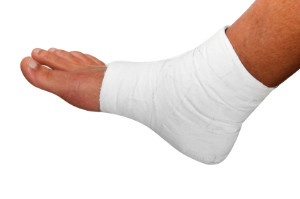 Landry Shamet of Wichita State recently suffered a stress fracture in his right foot, which will unfortunately require surgery. As a result, he is expected to miss 12 to 16 weeks of gameplay so he can recover. When he was healthy, Shamet was able to average 11 points per game, along with 3 rebounds, and 3 assists last season. Both Shamet and head coach Gregg Marshall have stated that they are “confident” that Shamet’s return will be sometime during the middle of November. However, stress fractures can be tricky to deal with, and he is expected to be on crutches for the next six to eight weeks.
Landry Shamet of Wichita State recently suffered a stress fracture in his right foot, which will unfortunately require surgery. As a result, he is expected to miss 12 to 16 weeks of gameplay so he can recover. When he was healthy, Shamet was able to average 11 points per game, along with 3 rebounds, and 3 assists last season. Both Shamet and head coach Gregg Marshall have stated that they are “confident” that Shamet’s return will be sometime during the middle of November. However, stress fractures can be tricky to deal with, and he is expected to be on crutches for the next six to eight weeks.
Activities where too much pressure is put on the feet can cause stress fractures. To learn more, contact Dr. Yeon A. Shim from Roselle Podiatry Group. Our doctor can provide the care you need to keep your pain free and on your feet.
Dealing with Stress Fractures of the Foot and Ankle
Stress fractures occur in the foot and ankle when muscles in these areas weaken from too much or too little use. The feet and ankles then lose support when walking or running from the impact of the ground. Since there is no protection, the bones receive the full impact of each step. Stress on the feet can cause cracks to form in the bones, thus creating stress fractures.
What Are Stress Fractures?
Stress fractures occur frequently in individuals whose daily activities cause great impact on the feet and ankles. Stress factors are most common among:
- Runners
- People affected with Osteoporosis
- Tennis or basketball players
- Gymnasts
- High impact workouts
Symptoms
Pain from the fractures occur in the area of the fractures and can be constant or intermittent. It will often cause sharp or dull pain with swelling and tenderness. Engaging in any kind of activity which involves high impact will aggravate pain.
If you have any questions please feel free to contact our office located in Roselle, NJ . We offer the newest diagnostic and treatment technologies for all your foot and ankle needs.
Read more about Dealing with Stress Fractures of the Foot and AnkleLandry Shamet Suffers Stress Fracture in Foot
 Landry Shamet of Wichita State recently suffered a stress fracture in his right foot, which will unfortunately require surgery. As a result, he is expected to miss 12 to 16 weeks of gameplay so he can recover. When he was healthy, Shamet was able to average 11 points per game, along with 3 rebounds, and 3 assists last season. Both Shamet and head coach Gregg Marshall have stated that they are “confident” that Shamet’s return will be sometime during the middle of November. However, stress fractures can be tricky to deal with, and he is expected to be on crutches for the next six to eight weeks.
Landry Shamet of Wichita State recently suffered a stress fracture in his right foot, which will unfortunately require surgery. As a result, he is expected to miss 12 to 16 weeks of gameplay so he can recover. When he was healthy, Shamet was able to average 11 points per game, along with 3 rebounds, and 3 assists last season. Both Shamet and head coach Gregg Marshall have stated that they are “confident” that Shamet’s return will be sometime during the middle of November. However, stress fractures can be tricky to deal with, and he is expected to be on crutches for the next six to eight weeks.
Activities where too much pressure is put on the feet can cause stress fractures. To learn more, contact Dr. Yeon A. Shim from Roselle Podiatry Group. Our doctor can provide the care you need to keep your pain free and on your feet.
Dealing with Stress Fractures of the Foot and Ankle
Stress fractures occur in the foot and ankle when muscles in these areas weaken from too much or too little use. The feet and ankles then lose support when walking or running from the impact of the ground. Since there is no protection, the bones receive the full impact of each step. Stress on the feet can cause cracks to form in the bones, thus creating stress fractures.
What Are Stress Fractures?
Stress fractures occur frequently in individuals whose daily activities cause great impact on the feet and ankles. Stress factors are most common among:
- Runners
- People affected with Osteoporosis
- Tennis or basketball players
- Gymnasts
- High impact workouts
Symptoms
Pain from the fractures occur in the area of the fractures and can be constant or intermittent. It will often cause sharp or dull pain with swelling and tenderness. Engaging in any kind of activity which involves high impact will aggravate pain.
If you have any questions please feel free to contact our office located in Roselle, NJ. We offer the newest diagnostic and treatment technologies for all your foot and ankle needs.
Read more about Dealing with Stress Fractures of the Foot and AnkleWhy Your Feet Need Exercise
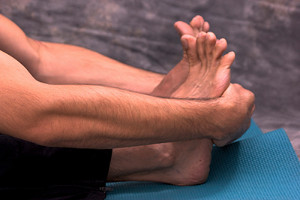 Foot exercises may be done in order to alleviate pain you are experiencing in your feet. If you are someone who suffers from plantar fasciitis, there is a simple exercise you can do to feel some relief. You start by sitting in a chair with a tennis ball under your foot. Begin to roll the ball back and forth between your heel and the ball of your foot. This exercise can be done a few times a day in order to alleviate pain, and it should be done on both feet. If you are experiencing a heel spur, you would repeat this exercise but with a frozen water bottle. The coldness of the bottled water will assist in relieving inflammation.
Foot exercises may be done in order to alleviate pain you are experiencing in your feet. If you are someone who suffers from plantar fasciitis, there is a simple exercise you can do to feel some relief. You start by sitting in a chair with a tennis ball under your foot. Begin to roll the ball back and forth between your heel and the ball of your foot. This exercise can be done a few times a day in order to alleviate pain, and it should be done on both feet. If you are experiencing a heel spur, you would repeat this exercise but with a frozen water bottle. The coldness of the bottled water will assist in relieving inflammation.
Exercising your feet regularly with the proper foot wear is a great way to prevent injuries and build strength. If you have any concerns about your feet, contact Dr. Yeon A. Shim from Roselle Podiatry Group. Our doctor can provide the care you need to keep you pain-free and on your feet.
Exercise for Your Feet
Exercise for your feet can help you gain strength, mobility and flexibility in your feet. They say that strengthening your feet can be just as rewarding as strengthening another part of the body. Your feet are very important, and we often forget about them in our daily tasks. But it is because of our feet that are we able to get going and do what we need to. For those of us fortunate enough to not have any foot problems, it is an important gesture to take care of them to ensure good health in the long run.
Some foot health exercises can include ankle pumps, tip-toeing, toe rises, lifting off the floor doing reps and sets, and flexing the toes. It is best to speak with Our doctor to determine an appropriate regimen for your needs. Everyone’s needs and bodies are different, and the activities required to maintain strength in the feet vary from individual to individual.
Once you get into a routine of doing regular exercise, you may notice a difference in your feet and how strong they may become.
If you have any questions please feel free to contact our office located in Roselle, NJ . We offer the newest diagnostic and treatment technologies for all your foot and ankle needs.
Read more about Exercise for Your FeetWhy Your Feet Need Exercise
 Foot exercises may be done in order to alleviate pain you are experiencing in your feet. If you are someone who suffers from plantar fasciitis, there is a simple exercise you can do to feel some relief. You start by sitting in a chair with a tennis ball under your foot. Begin to roll the ball back and forth between your heel and the ball of your foot. This exercise can be done a few times a day in order to alleviate pain, and it should be done on both feet. If you are experiencing a heel spur, you would repeat this exercise but with a frozen water bottle. The coldness of the bottled water will assist in relieving inflammation.
Foot exercises may be done in order to alleviate pain you are experiencing in your feet. If you are someone who suffers from plantar fasciitis, there is a simple exercise you can do to feel some relief. You start by sitting in a chair with a tennis ball under your foot. Begin to roll the ball back and forth between your heel and the ball of your foot. This exercise can be done a few times a day in order to alleviate pain, and it should be done on both feet. If you are experiencing a heel spur, you would repeat this exercise but with a frozen water bottle. The coldness of the bottled water will assist in relieving inflammation.
Exercising your feet regularly with the proper foot wear is a great way to prevent injuries and build strength. If you have any concerns about your feet, contact Dr. Yeon A. Shim from Roselle Podiatry Group. Our doctor can provide the care you need to keep you pain-free and on your feet.
Exercise for Your Feet
Exercise for your feet can help you gain strength, mobility and flexibility in your feet. They say that strengthening your feet can be just as rewarding as strengthening another part of the body. Your feet are very important, and we often forget about them in our daily tasks. But it is because of our feet that are we able to get going and do what we need to. For those of us fortunate enough to not have any foot problems, it is an important gesture to take care of them to ensure good health in the long run.
Some foot health exercises can include ankle pumps, tip-toeing, toe rises, lifting off the floor doing reps and sets, and flexing the toes. It is best to speak with Our doctor to determine an appropriate regimen for your needs. Everyone’s needs and bodies are different, and the activities required to maintain strength in the feet vary from individual to individual.
Once you get into a routine of doing regular exercise, you may notice a difference in your feet and how strong they may become.
If you have any questions please feel free to contact our office located in Roselle, NJ. We offer the newest diagnostic and treatment technologies for all your foot and ankle needs.
Read more about Exercise for Your FeetWhy You Should Avoid Wearing Flip-Flops
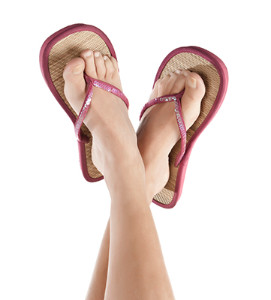 Flip-flops are a common footwear selection for many Americans during the summer. However, these shoes can be very problematic for your feet. While flip-flops may be a better choice compared to walking barefoot, they provide no arch or heel support for your feet. As a result, you may suffer from issues such as plantar fasciitis and stress fractures. If you still choose to wear these shoes despite the dangers they put your feet at risk for, you should choose a pair that are made out of soft leather. If you have an old pair of flip-flops in your closet, you should inspect them and see if they are still fit to wear.
Flip-flops are a common footwear selection for many Americans during the summer. However, these shoes can be very problematic for your feet. While flip-flops may be a better choice compared to walking barefoot, they provide no arch or heel support for your feet. As a result, you may suffer from issues such as plantar fasciitis and stress fractures. If you still choose to wear these shoes despite the dangers they put your feet at risk for, you should choose a pair that are made out of soft leather. If you have an old pair of flip-flops in your closet, you should inspect them and see if they are still fit to wear.
Flip-flops are not always the best choice of footwear. If you have any concerns about your feet or ankles, contact Dr. Yeon A. Shim from Roselle Podiatry Group. Our doctor will assist you with all of your foot and ankle needs.
Flip-Flops and Feet
When the weather starts warming up, people enjoy wearing flip-flops. Flip-flops are comfortable, stylish, and easy to slip on and off; they're perfect for any summer beach goer. However, these shoes can cause harm to the feet.
How Can Flip-Flops Affect Me Long-Term?
- Ankle problems
- Hip problems
- Lower back problems
- Pain in the balls of the feet
- Problems with foot arches
- Changes in the way you walk
Are There Injuries Associated with Flip-Flops?
Yes. Since flip-flops are relatively weak and do not provide the same amount of support as sneakers, people who wear flip-flops regularly are more susceptible to injuries. On top of that, the open nature of the shoe makes your feet more prone to other problems, such as cuts and even infections. Common injuries and ailments include:
- Sprained ankles
- Blisters
- Infections
- Cuts and Scrapes
I like Wearing Flip-Flops. Are There Safe Alternatives?
When buying flip-flops, try to find ones that have sturdy soles and that are made of high-quality materials that will support for your feet. These flip-flops will cost more but will also last longer as a result.
If you have any questions please feel free to contact our office located in Roselle, NJ . We offer the newest diagnostic and treatment technologies for all your foot and ankle needs.
Read more about Flip Flops and FeetWhy You Should Avoid Wearing Flip-Flops
 Flip-flops are a common footwear selection for many Americans during the summer. However, these shoes can be very problematic for your feet. While flip-flops may be a better choice compared to walking barefoot, they provide no arch or heel support for your feet. As a result, you may suffer from issues such as plantar fasciitis and stress fractures. If you still choose to wear these shoes despite the dangers they put your feet at risk for, you should choose a pair that are made out of soft leather. If you have an old pair of flip-flops in your closet, you should inspect them and see if they are still fit to wear.
Flip-flops are a common footwear selection for many Americans during the summer. However, these shoes can be very problematic for your feet. While flip-flops may be a better choice compared to walking barefoot, they provide no arch or heel support for your feet. As a result, you may suffer from issues such as plantar fasciitis and stress fractures. If you still choose to wear these shoes despite the dangers they put your feet at risk for, you should choose a pair that are made out of soft leather. If you have an old pair of flip-flops in your closet, you should inspect them and see if they are still fit to wear.
Flip-flops are not always the best choice of footwear. If you have any concerns about your feet or ankles, contact Dr. Yeon A. Shim from Roselle Podiatry Group. Our doctor will assist you with all of your foot and ankle needs.
Flip-Flops and Feet
When the weather starts warming up, people enjoy wearing flip-flops. Flip-flops are comfortable, stylish, and easy to slip on and off; they're perfect for any summer beach goer. However, these shoes can cause harm to the feet.
How Can Flip-Flops Affect Me Long-Term?
- Ankle problems
- Hip problems
- Lower back problems
- Pain in the balls of the feet
- Problems with foot arches
- Changes in the way you walk
Are There Injuries Associated with Flip-Flops?
Yes. Since flip-flops are relatively weak and do not provide the same amount of support as sneakers, people who wear flip-flops regularly are more susceptible to injuries. On top of that, the open nature of the shoe makes your feet more prone to other problems, such as cuts and even infections. Common injuries and ailments include:
- Sprained ankles
- Blisters
- Infections
- Cuts and Scrapes
I like Wearing Flip-Flops. Are There Safe Alternatives?
When buying flip-flops, try to find ones that have sturdy soles and that are made of high-quality materials that will support for your feet. These flip-flops will cost more but will also last longer as a result.
If you have any questions please feel free to contact our office located in Roselle, NJ. We offer the newest diagnostic and treatment technologies for all your foot and ankle needs.
Read more about Flip Flops and FeetMore...
The Best Ways to Prevent Running Injuries
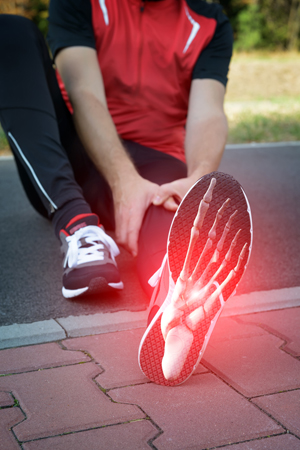 If you plan on starting a new running routine, it is crucial that you are aware of the many ways to avoid injury. One of the most common causes of injury is jumping into a high-intensity routine without working your way up to it. Before running heavily, it is advised that beginners follow a routine of running 1-4 miles for four weeks. Following this method will allow your body to become more comfortable settling into a new running routine so that you do not overexert yourself. Another good way to prevent running injury is to do a warm up exercise. Warming up helps send oxygen-rich blood cells to the parts of your body that need it most for a workout. Lastly, “cooling down” is an essential part of any running routine that should not be ignored if you want to prevent injury.
If you plan on starting a new running routine, it is crucial that you are aware of the many ways to avoid injury. One of the most common causes of injury is jumping into a high-intensity routine without working your way up to it. Before running heavily, it is advised that beginners follow a routine of running 1-4 miles for four weeks. Following this method will allow your body to become more comfortable settling into a new running routine so that you do not overexert yourself. Another good way to prevent running injury is to do a warm up exercise. Warming up helps send oxygen-rich blood cells to the parts of your body that need it most for a workout. Lastly, “cooling down” is an essential part of any running routine that should not be ignored if you want to prevent injury.
Exercising your feet regularly with the proper foot wear is a great way to prevent injuries. If you have any concerns about your feet, contact Dr. Yeon A. Shim of Roselle Podiatry Group. Our doctor will treat your foot and ankle needs.
How to Prevent Running Injuries
Many common running injuries are caused by overuse and overtraining. When the back of the kneecap starts wearing out and starts causing pain in your knee, this is commonly referred to as runner’s knee. Runner’s knee is a decrease in strength in your quadriceps and can occur if you’re not wearing properly fitted or supporting shoes. To prevent runner’s knee, focusing on hip strengthening is a good idea, as well as strengthening your quads to keep the kneecaps aligned.
What Are Some Causes of Running Injuries?
- One cause of a common running injury is called iliotibial band syndrome.
- Plantar fasciitis is also another common injury.
- Stress fractures can occur from overtraining, lack of calcium, or even your running style.
Best Ways to Prevent Running Injuries
- Wear footwear that fits properly and suits your running needs.
- Running shoes are the only protective gear that runners have to safeguard them from injury.
- Make a training schedule. Adding strengthening exercises as well as regular stretching can help keep you strong and limber and can lessen the possibility of injuries.
- Stretching keeps muscles limber; this will help you gain better flexibility.
If you have any questions please feel free to contact our office located in Roselle, NJ . We offer the newest diagnostic and treatment technologies for all your foot and ankle needs.
The Best Ways to Prevent Running Injuries
 If you plan on starting a new running routine, it is crucial that you are aware of the many ways to avoid injury. One of the most common causes of injury is jumping into a high-intensity routine without working your way up to it. Before running heavily, it is advised that beginners follow a routine of running 1-4 miles for four weeks. Following this method will allow your body to become more comfortable settling into a new running routine so that you do not overexert yourself. Another good way to prevent running injury is to do a warm up exercise. Warming up helps send oxygen-rich blood cells to the parts of your body that need it most for a workout. Lastly, “cooling down” is an essential part of any running routine that should not be ignored if you want to prevent injury.
If you plan on starting a new running routine, it is crucial that you are aware of the many ways to avoid injury. One of the most common causes of injury is jumping into a high-intensity routine without working your way up to it. Before running heavily, it is advised that beginners follow a routine of running 1-4 miles for four weeks. Following this method will allow your body to become more comfortable settling into a new running routine so that you do not overexert yourself. Another good way to prevent running injury is to do a warm up exercise. Warming up helps send oxygen-rich blood cells to the parts of your body that need it most for a workout. Lastly, “cooling down” is an essential part of any running routine that should not be ignored if you want to prevent injury.
Exercising your feet regularly with the proper foot wear is a great way to prevent injuries. If you have any concerns about your feet, contact Dr. Yeon A. Shim of Roselle Podiatry Group. Our doctor will treat your foot and ankle needs.
How to Prevent Running Injuries
Many common running injuries are caused by overuse and overtraining. When the back of the kneecap starts wearing out and starts causing pain in your knee, this is commonly referred to as runner’s knee. Runner’s knee is a decrease in strength in your quadriceps and can occur if you’re not wearing properly fitted or supporting shoes. To prevent runner’s knee, focusing on hip strengthening is a good idea, as well as strengthening your quads to keep the kneecaps aligned.
What Are Some Causes of Running Injuries?
- One cause of a common running injury is called iliotibial band syndrome.
- Plantar fasciitis is also another common injury.
- Stress fractures can occur from overtraining, lack of calcium, or even your running style.
Best Ways to Prevent Running Injuries
- Wear footwear that fits properly and suits your running needs.
- Running shoes are the only protective gear that runners have to safeguard them from injury.
- Make a training schedule. Adding strengthening exercises as well as regular stretching can help keep you strong and limber and can lessen the possibility of injuries.
- Stretching keeps muscles limber; this will help you gain better flexibility.
If you have any questions please feel free to contact our office located in Roselle, NJ. We offer the newest diagnostic and treatment technologies for all your foot and ankle needs.
Read more about How to Prevent Running InjuriesJustin Patton Undergoes Foot Surgery
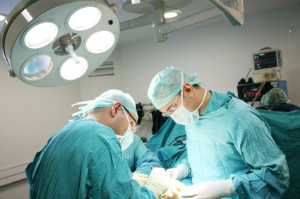 Rookie center Justin Patton of the Minnesota Timberwolves recently underwent surgery to repair a broken metatarsal in his foot. Patton suffered the injury during a workout and unfortunately will not be available to play in the Las Vegas Summer League. Although Patton underwent a successful surgery, he is expected to be kept out of gameplay until further notice, which isn’t good news for the rookie. The surgeon who performed his operation is no stranger to NBA injuries; he has also done similar operations to Kevin Durant and Brook Lopez in recent years.
Rookie center Justin Patton of the Minnesota Timberwolves recently underwent surgery to repair a broken metatarsal in his foot. Patton suffered the injury during a workout and unfortunately will not be available to play in the Las Vegas Summer League. Although Patton underwent a successful surgery, he is expected to be kept out of gameplay until further notice, which isn’t good news for the rookie. The surgeon who performed his operation is no stranger to NBA injuries; he has also done similar operations to Kevin Durant and Brook Lopez in recent years.
Foot surgery is sometimes necessary to treat a foot ailment. To learn more, contact Dr. Yeon A. Shim of Roselle Podiatry Group. Our doctor will assist you with all of your foot and ankle needs.
When Is Surgery Necessary?
Foot and ankle surgery is generally reserved for cases in which less invasive, conservative procedures have failed to alleviate the problem. Some of the cases in which surgery may be necessary include:
- Removing foot deformities like bunions and bone spurs
- Severe arthritis that has caused bone issues
- Cosmetic reconstruction
What Types of Surgery Are There?
The type of surgery you receive will depend on the nature of the problem you have. Some of the possible surgeries include:
- Bunionectomy for painful bunions
- Surgical fusion for realignment of bones
- Neuropathy decompression surgery to treat nerve damage
Benefits of Surgery
Although surgery is usually a last resort, it can provide more complete pain relief compared to non-surgical methods and may allow you to finally resume full activity.
Surgical techniques have also become increasingly sophisticated. Techniques like endoscopic surgery allow for smaller incisions and faster recovery times.
If you have any questions please feel free to contact our office located in Roselle, NJ . We offer the newest diagnostic and treatment technologies for all your foot and ankle needs.
Read more about Foot SurgeryJustin Patton Undergoes Foot Surgery
 Rookie center Justin Patton of the Minnesota Timberwolves recently underwent surgery to repair a broken metatarsal in his foot. Patton suffered the injury during a workout and unfortunately will not be available to play in the Las Vegas Summer League. Although Patton underwent a successful surgery, he is expected to be kept out of gameplay until further notice, which isn’t good news for the rookie. The surgeon who performed his operation is no stranger to NBA injuries; he has also done similar operations to Kevin Durant and Brook Lopez in recent years.
Rookie center Justin Patton of the Minnesota Timberwolves recently underwent surgery to repair a broken metatarsal in his foot. Patton suffered the injury during a workout and unfortunately will not be available to play in the Las Vegas Summer League. Although Patton underwent a successful surgery, he is expected to be kept out of gameplay until further notice, which isn’t good news for the rookie. The surgeon who performed his operation is no stranger to NBA injuries; he has also done similar operations to Kevin Durant and Brook Lopez in recent years.
Foot surgery is sometimes necessary to treat a foot ailment. To learn more, contact Dr. Yeon A. Shim of Roselle Podiatry Group. Our doctor will assist you with all of your foot and ankle needs.
When Is Surgery Necessary?
Foot and ankle surgery is generally reserved for cases in which less invasive, conservative procedures have failed to alleviate the problem. Some of the cases in which surgery may be necessary include:
- Removing foot deformities like bunions and bone spurs
- Severe arthritis that has caused bone issues
- Cosmetic reconstruction
What Types of Surgery Are There?
The type of surgery you receive will depend on the nature of the problem you have. Some of the possible surgeries include:
- Bunionectomy for painful bunions
- Surgical fusion for realignment of bones
- Neuropathy decompression surgery to treat nerve damage
Benefits of Surgery
Although surgery is usually a last resort, it can provide more complete pain relief compared to non-surgical methods and may allow you to finally resume full activity.
Surgical techniques have also become increasingly sophisticated. Techniques like endoscopic surgery allow for smaller incisions and faster recovery times.
If you have any questions please feel free to contact our office located in Roselle, NJ. We offer the newest diagnostic and treatment technologies for all your foot and ankle needs.
Read more about Foot Surgery

